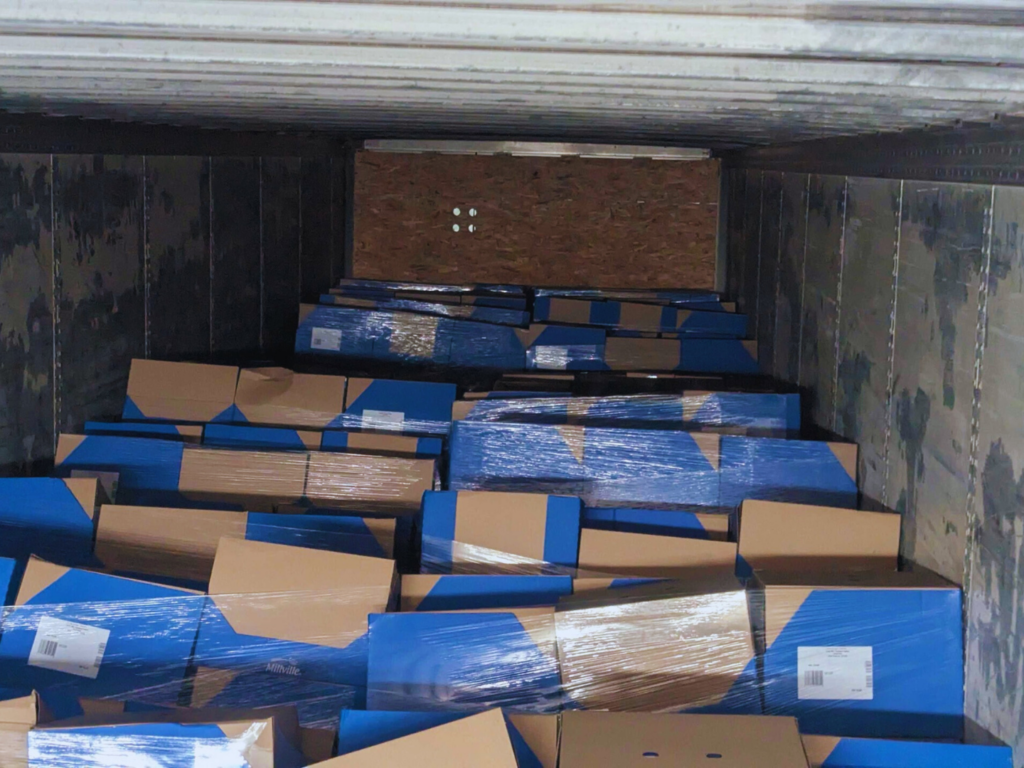If your business ships or stores goods on pallets in the Phoenix area, having a reliable pallet restacking provider is essential. Properly restacking and reworking pallets ensures the safety of your products, optimized shipping and storage density, and efficient supply chain operations. This guide will walk you through finding the ideal Phoenix pallet restacking service for your unique needs.

What is Pallet Restacking and Why it Matters
Pallet restacking involves disassembling product on a pallet and reassembling the freight onto a like-new pallet that meets quality specifications. Pallet restacking goes beyond manual labor to ensure rebuilt pallets meet quality standards.
Proper restacking is crucial for several reasons:
- Safety
Broken or unstable pallets can collapse and cause product damage or injuries. Restacked pallets are completely rebuilt to be handled like new pallets.
- Optimization
With pallet restacking, shifted freight is restacked and made ready to handle. This ensures the freight can be efficiently handled with a forklift or pallet jack.
- Standards
Restacked pallets meet quality specifications for dimensions, quantity per pallet, and any other requirements.
- Consistency
Using a dedicated pallet restacking provider results in pallets that are a consistent quality.
In the Phoenix area, the heavy traffic can cause shifted loads and damage freight that needs to be restacked before the receiver will accept the load. A reliable pallet restacking warehouse makes sure your freight is delivered without issue.
Key Palletizing Considerations
There are many factors to consider when determining pallet configurations. Some key options to consider include:
- Customer requirements – If the customer or any specific party have palletizing requirements be sure to follow them exactly.
- Pallet material – Wood, plastic, composite, and heat treated pallets are just a few of the types of pallets that may be purchased. Identify the best option for the freight.
- Size of pallet- Pallets should be size appropriate for the freight being stacked. Ideally the freight should not overhang the pallet on any side. Standard pallet size in the US is 40×48″, but custom size pallets can be purchased with advance notice.
- Quantity per layer and number of layers (TI-HI) – Freight should be uniformly palletized. Determine how many units fit in one layer without overhanging the pallet. Then figure out how many layers will be on each pallet. The height of the pallet may be impacted by 1) receiver requirements, 2) if the pallets will be stacked or racked for storage, 3) how stable the freight is packaged, and 4) how fragile the freight is.
If there is any uncertainty of the palletizing requirements, simply ask the customer for approval of how the freight is palletized before restacking all of the pallets.
Getting Quotes from Phoenix Pallet Restacking Companies
The key when selecting a Phoenix pallet restacking provider is making sure to get quotes from multiple facilities. Rates can vary greatly depending on factors like:
- Experience level
- Quality standards
- Materials used
- Production capacity
- Quote basis (per pallet or project-based)
- Turnaround times
Be sure to get an itemized breakdown of all costs instead of just a bottom-line rate. This lets you accurately compare quotes. Important items to ask about include:
- Basic restacking rate per pallet
- Costs for custom/specialty pallets if relevant
- Repair or disposal fees if further work is needed
- Pickup/delivery fees if applicable
- Supply costs for pallets, bands, etc.
- Minimum order total
Getting quotes from at least 2-3 facilities ensures you don’t overpay while still receiving quality restacking services tailored to your Phoenix operation’s needs.
Vetting and Selecting the Best Phoenix Pallet Restacking Provider
With quotes in hand from top contenders, you can validate capabilities, expertise, reliability, and overall fit. Key vetting considerations include:
- Checking reputation through online reviews, client references, BBB rating, and association memberships.
- Reviewing example projects similar to your needs.
- Touring the provider’s facility to personally see facility, team, and capacity.
- Evaluating employee experience levels and training procedures to ensure consistent outputs.
- Verifying inspection, quality control, and assurance procedures to guarantee restacked pallets meet specifications.
- Assessing delivery fleet/logistics capabilities for reliable just-in-time pickup and drop-off if required.
Ultimately the right pallet restacking company comes down to balancing cost, quality, and service for your unique needs. Take time to thoroughly evaluate providers using the criteria above before selecting a partner.
Leverage Our Warehouse Finder Tool
Are you looking for the best pallet restacking facility in Phoenix, AZ? Then use our tool. We provide you with an easy to use tool for finding the best facilities. Click here to find a warehouse for pallet restacking near you today.
The easy-to-use warehouse finder simplifies locating ideal facilities for pallet storage, container unloading, distribution centers, and other industrial space requirements. Find your perfect Phoenix warehouse fit in just minutes!
